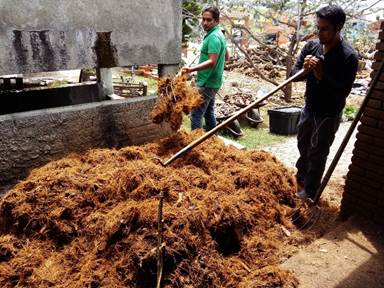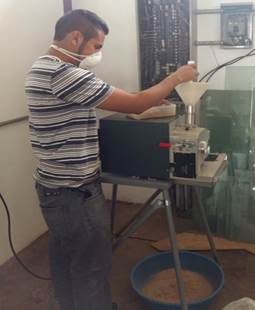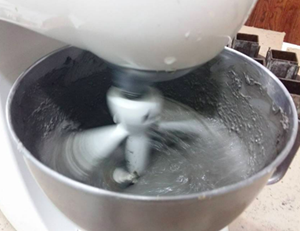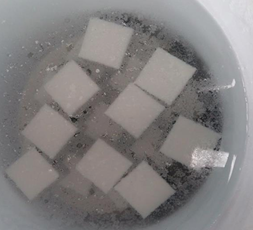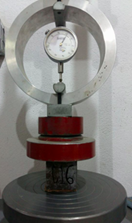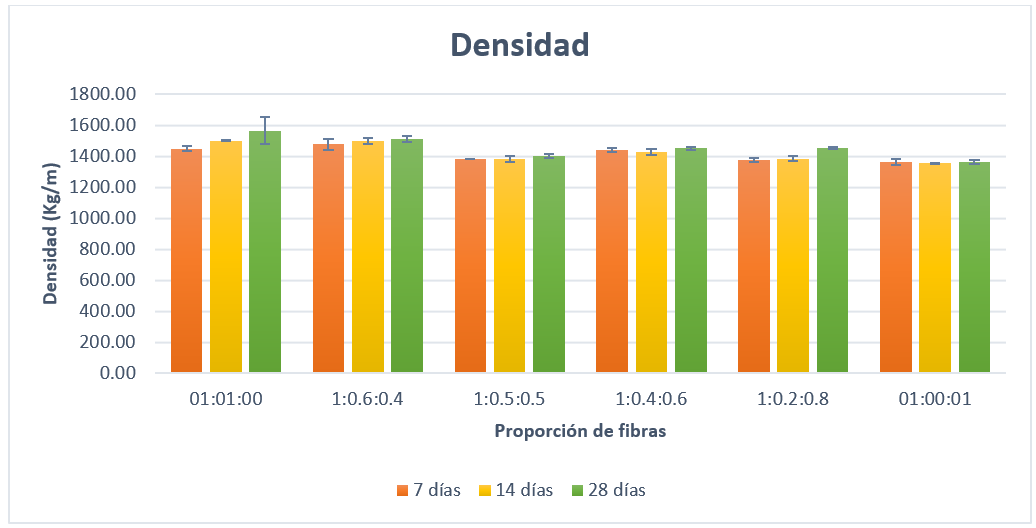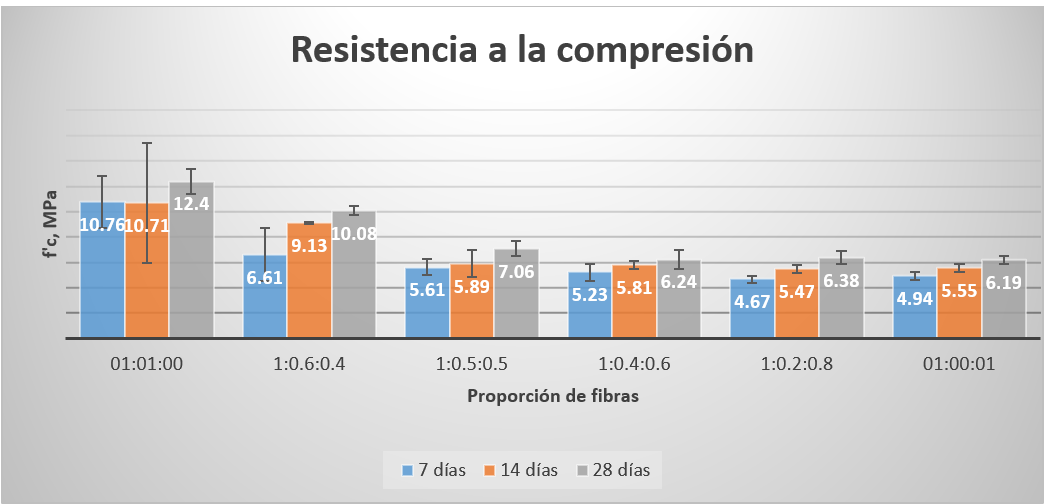Servicios Personalizados
Revista
Articulo
Indicadores
-
 Citado por SciELO
Citado por SciELO -
 Accesos
Accesos
Links relacionados
-
 Similares en
SciELO
Similares en
SciELO
Compartir
Revista mexicana de ciencias agrícolas
versión impresa ISSN 2007-0934
Rev. Mex. Cienc. Agríc vol.9 spe 21 Texcoco sep./nov. 2018
https://doi.org/10.29312/remexca.v0i21.1531
Investigation notes
Biocomposite tepexil cement reinforced with fibers of Agave angustifolia Haw. as a light mortar
1Instituto Politécnico Nacional- CIIDIR Unidad Oaxaca, Departamento de Investigación Hornos No. 1003, Col. Noche Buena, Municipio de Santa Cruz Xoxocotlán, Oaxaca, CP. 71230, Oaxaca. Tel. (951) 517 0610 Ext. 82742 (mcaballero@ipn.mx; arrafael@yahoo.com.mx, mbernabejoseluis@yahoo.com.mx, marusr@yahoo.com).
2Tecnológico Nacional de México/ Instituto Tecnológico de Oaxaca, Departamento de Ingeniería Mecánica, Calz Tecnológico No. 125, CP. 68030, Oaxaca, Oaxaca. Tel. (951) 50 15016. (fernandochinas@gmail.com).
The agave bagasse is a residual material obtained in the mezcal process. The accumulation of this material is considered an environmental problem in the communities that produce this spirit drink in an artisanal way. This waste contains optimal fibers for use as reinforcement material, obtaining an added value and reducing environmental pollution. In the development of a new material, you need to know its mechanical properties. To know if the new material is feasible, one of the most important properties is the resistance to compression. For this work, the objective was to determine the compressive strength of a biocomposite cement/tepexil matrix material, reinforced with agave bagasse fibers. To obtain the material, the fibers were washed with water with a pressure washer, dried in the open for 7 hours and ground in a knife mill to 1 mm in length. Subsequently, they were treated with an aqueous solution of 10% calcium hydroxide, for 34 h. Five different formulations were made with different proportions of fiber/tepexil. The compressive strength was measured on a Geotest universal machine at 7, 14 and 28 days. It was observed that in the increase of the proportion of fibers there is a decrease in the compressive strength and density of the biocomposite material. The optimum fiber ratio was 1:0:1 (Portland cement:tepexil:fiber), with a compressive strength of 6.19 MPa and a density of 1 366.73 kg/m3 at 28 days.
Keywords: agave bagasse fibers; biocomposite material; compressive strength
El bagazo de agave es un material residual que se obtiene en el proceso del mezcal. La acumulación de este material se considera un problema ambiental en las comunidades que producen esta bebida espirituosa de forma artesanal. Este residuo contiene fibras óptimas para su uso como material de refuerzo, obteniéndose un valor agregado y reduciendo la contaminación ambiental. En el desarrollo de un nuevo material, se necesita conocer sus propiedades mecánicas. Para saber si el nuevo material es factible, una de las propiedades más importantes es la resistencia a la compresión. Para este trabajo se tuvo como objetivo determinar la resistencia a la compresión de un material biocompuesto de matriz cemento/tepexil, reforzado con fibras de bagazo de agave. Para la obtención del material, las fibras fueron lavadas con agua con una hidrolavadora, secadas a la intemperie durante 7 h y molidas en un molino de cuchillas a 1 mm de longitud. Posteriormente, se trataron con una solución acuosa de hidróxido de calcio al 10%, durante 34 h. Se realizaron cinco distintas formulaciones con diferentes proporciones de fibra/tepexil. La resistencia a la compresión se midió en una máquina universal Geotest a 7, 14 y 28 días. Se observó que en el aumento de la proporción de fibras hay una disminución en la resistencia a la compresión y densidad del material biocompuesto. La proporción óptima de fibras fue de 1:0:1 (cemento Portland:tepexil:fibra), con una resistencia a la compresión de 6.19 MPa y una densidad de 1 366.73 kg/m3 a los 28 días.
Palabras clave: fibras de bagazo de agave; material biocompuesto; resistencia a la compresión
Introduction
In the mezcal production process waste is generated, mainly agave bagasse. In the state of Oaxaca, approximately 4 807 275 tonnes of bagazo from Agave angustifolia Haw are produced (Gutiérrez, Altamirano and Urrestazaru, 2012). This waste contains lignocellulosic fibers that are not used and are dumped in fields or streams (Cortes, 2009) which contribute to the greenhouse effect (Gómez, 2014). In recent years, it has been preferred to use plant fibers to develop building materials due to its technical advantages: low density, low commercial value, tensile strength and excellent thermal comfort (Aguilar et al., 2005). At present, there are no studies that find industrial use to bagasse. For every ton of bagasse of Agave angustifolia Haw 3.1% fiber is obtained. The fibers are mainly composed of cellulose (43%), hemicellulose (19%), lignin (15%), sugars (10%), among others (Zárate, 2006).
Composite materials are of great importance in the science and technology of materials, since their combinations provide physical and mechanical properties different from those of their components. Abdullah et al. (2011) made a composite material of Portland cement reinforced with coconut fiber and sand, the size of the sand was less than 2 mm, with a water cement ratio of 0.55. The sand was replaced by coconut fiber at 3, 6, 9, 12 and 15%. The results to the modulus of rupture and resistance to compression with 9% fiber were the highest with 43.8 MPa at 28 days. On the other hand, Darsana et al. (2016) developed with a composite material of cement, sand and 25mm coconut fibers. They replaced the sand with fibers at 10 and 15%, with a water/cement ratio of 0.6, obtaining results at compressive strength of 40.10 MPa with 10% fiber substitution. Roma et al. (2008) carried out a mechanical, physical and thermal evaluation of tiles with various formulations of pozzolanic portland cement and silica fume, reinforced with 0.66 mm eucalyptus fibers and/or 1.66 mm sisal. It was found that materials reinforced with 28- day sisal fibers had the best results in tenacity and maximum load of 1152 J/m2 and 1111 N respectively. They also observed that the type of fibers influence water absorption, bulk density and permeability. Finally, the thermal performance of the sisal reinforced material showed that they are acceptable as substitutes for fiber cement sheets.
The objective of the present study was to determine the compressive strength of a biocomposite cement/tepexil matrix material, reinforced with agave bagasse fibers for later applications in the construction.
Materials and methods
Conditioning of fibers
The bagazo of Agave angustifolia Haw was collected in a palenque of Santiago Matatlan, Oaxaca, 16º 51’ 55.4” north latitude 96º 22’ 41.1” west longitude (Figure 1). The bagasse was immersed in drinking water until it was completely covered for 24 h in order to separate and soften the pulp of the fibers. The bagasse was washed with a Karcher Model K4 Premium Car washer, in order to remove the pulp and sugars from the fibers and not alter the final results of the mortar mixtures. The washed fibers were exposed to the sun for 7 h to be dried. Once dry, the fibers were cut in a Fritsch Pulverisette 19 blade mill with a 1 mm sieve (Figure 2). Finally, the fibers were immersed for 34 h in an aqueous solution of calcium hydroxide at 10%, this treatment was carried out with the objective of eliminating the lignin from the fibers and improving the interface of the fibers with cement.
Matrix
Compound portland cement (CPC) Impercem 30R was used, which meets the specifications of the Mexican standard NMX-C-414-ONNCCE. In Table 1 its chemical composition of the Impercem is shown.
Table 1 Standard composition of composite Portland cement IMPERCEM 30R.
| Component | Mass (%) |
|---|---|
| Calcium oxide | ≈ 57.62 |
| Silicon oxide | ≈ 22.03 |
| Aluminum oxide | ≈ 4.74 |
| Iron oxide | ≈ 2.79 |
| Magnesium oxide | ≈ 1.30 |
| Sulfates | ---- |
| Other materials | < 11 |
The tepexil was obtained from the banks of Perote, Veracruz. It was sieved in meshes #4, #8 and #16 with a Rotap model RX-29, which performs two movements, a circular horizontal movement and a vertical nailing movement. Tepexil retained in mesh #16 was selected since it is sought to manufacture a material with low density. In the Table 2 shows the chemical composition of tepexil.
Table 2 Chemical composition of tepexil.
| Component | (%) mass |
|---|---|
| Calcium oxide | ≈ 1.7 |
| Silicon oxide | ≈ 67.5 |
| Aluminum oxide | ≈ 14.52 |
| Iron oxide | ≈ 2.41 |
| Magnesium oxide | ≈ 0.44 |
| Sulfates | ---- |
| Other materials | < 13 |
Source: Méndez (2008).
In Table 3 the experimental design is shown to evaluate the effect of the fibers in the matrix on the mechanical properties.
Preparation of biocomposite material
For the preparation of the biocomposites, cubes of 50 mm were made based on the ASTM C 109/C 109M - 05 standard with 1:1 CPC: tepexil (control) and 5 more mixtures, replacing a part of tepexil with fibers of agave in the following concentrations: 40, 50, 60, 80 and 100% by weight. Previously, the cement, tepexil and fibers were mixed dry in a Hamilton Beach brand blender for 4 min to homogenize the materials. Subsequently, water was added to the blender with a water/cement ratio of 0.5 for concentrations 40 to 80% and 0.4 for the concentration of 100% fibers and mixed again for 4 min (Figure 3).
Once the mixture was ready, 50 x 50 x 50 mm metal cubes were filled according to the method of ASTM C 109/C 109M-05. After 24 h, the cubes were immersed in an aqueous solution with 3% calcium hydroxide based on the weight of the water, as shown in Figure 4, for its cure.
Compressive strength
The specimens were tested at the ages of 7, 14 and 28 days as established in the standard. The machines used for these tests, due to the load capacity, were a Geotest press, model S5830 Multiloader, applying load at a speed of 1 mm/min (Figure 5) and a 120 ton manual press Helicoio brand. To obtain the value of the compressive strength the following equation was used:
Where: 𝑓𝑚 - resistance to compression in MPa; 𝑃 - total maximum load in N; 𝐴 - area of the surface charged in mm2.
Results and discussion
In Figure 6 it can be seen that the increase in fiber content produces a low density in the samples. This is due to the difficult packing of the fibers, introducing holes in the biocomposite. Because of the low density, the compressive strength decreases when the proportion of fibers increases (Paramasivam et al., 1984; Khedari et al., 2001). In Table 4, it is possible to observe that the increase in fibers reduces the compressive strength and density of the material, but this value increases with increasing age. For samples of specimens with 100% fiber substitution had values of 80%, due to the water:cement ratio of 0.4 that was added and that caused an increase in compressive strength. The 1:0:1 ratio (CPC: tepexil: fibers) halved its resistance to the control ratio 1:1:0 at 28 days. All proportions at 14 days have a compressive strength greater than 5.2 MPa, which is higher than that required by ASTM C 270-07. In Figure 7 the increase in compressive strength can be seen as days go by. One of the advantages of lignocellulosic fibers is their low density, which translates into lighter materials. In the proportions of 1:0.2:0.8 and 1:0:1, there is a compressive strength greater than 5.2 MPa at 14 days.
Table 4 Resistance to compression.
| Proportion of CPC fibers: tepexil: fibers | 7 days | 14 days | 28 days | |||
|---|---|---|---|---|---|---|
| f’c A (MPa) | Density (kg/m3) | f’c (MPa) | Density (kg/m3) | f’c (MPa) | Density (kg/m3) | |
| 1:1:0 | 10.76 ± 2.03 |
1451.46 ± 13.58 |
10.71± 4.73 |
1502.95 ± 5.83 |
12.4 ± 0.99 |
1566.77 ± 85.43 |
| 1:0.6:0.4 | 6.61 ± 2.12 |
1478.30 ± 34.87 |
9.13 ± 0.06 |
1499.51 ± 20.34 |
10.08 ± 0.35 |
1512.32 ± 19.50 |
| 1:0.5:0.5 | 5.6 ± 0.64 |
1383.11 ± 1.43 |
5.89 ± 1.05 |
1383.79 ± 22.09 |
7.06 ± 0.60 |
1401.06 ± 14.04 |
| 1:0.4:0.6 | 5.23 ± 0.67 |
1442.32 ± 11.49 |
5.81 ± 0.30 |
1428.92 ± 18.26 |
6.24 ± 0.76 |
1452.94 ± 8.56 |
| 1:0.2:0.8 | 4.67 ± 0.29 |
1376 ± 13.56 |
5.47 ± 0.33 |
1386.8 ± 16.98 |
6.38 ± 0.49 |
1453.29 ± 7.70 |
| 1:0:1 | 4.94 ± 0.31 |
1364.73 ± 17.56 |
5.55 ± 0.30 |
1355.27 ± 1.38 |
6.19 ± 0.30 |
1366.73 ± 12.67 |
Af’c= compression resistance.
The 1:0:1 ratio (CPC:tepexil:fibers) has the lowest density with acceptable compressive strength per ASTM C 270-07. The density and compressive strength of an ordinary mortar is 2 000 kg/m3 and 22 MPa respectively (Khedari et al., 2001). In this study a light mortar with a density of 1 366.73 kg m3 was achieved, but the compressive strength was not exceeded.
Khedari et al. (2001) made two composite materials made of cement, sand and coconut fibers and cement, sand and durian fibers, resulting in the compressive strength of 2.46 and 3.29 MPa, with densities of 959 and 1 456 kg m3 respectively. It is observed that the sample of proportion 1:0:1 exceeds the compressive strength of the samples with coconut fibers and durian fibers and has lower density of the sample of cement, sand and durian fibers.
Abdullah et al. (2011) developed a composite material with cement, sand and coconut fibers having a compressive strength of 43.8 MPa and density of 1 955 kg m3, when compared to ordinary mortar, it does not have a light material because the density it has a similar value. However, the ratio 1:0:1, although it does not exceed the compressive strength, if it was possible to decrease its density, making a light mortar.
The 1:0:1 ratio also exceeds the compressive strength and is lighter than the composite material of Khedari et al. (2005) made with cement, earth, sand and coconut fibers obtaining values of compressive strength of 3.88 MPa and density of 1 586.77 kg m3.
Conclusions
The presence of vegetable fibers on cement/tepexil matrix allows obtaining lighter materials than those traditionally used in the construction industry. However, the presence of the fibers reduces the compressive strength of these materials. According to the ASTM C 270-07 standard, it establishes that the minimum compressive strength of this type of materials must be greater than 2.4 MPa, while the materials studied in this work have values 250% greater than the minimum value. The optimum proportion of fibers is 1:0:1 (CPC:tepexil:fibers) with a compressive strength of 6.19 MPa at 28 days. With this proportion you can make different products for construction, such as: blocks, tiles, partitions, among others, with the advantage of being a lightweight mortar of low density.
Literatura citada
Abdullah, A.; Jamaludin, S. B.; Anwar, M. I.; Noor, M. M. and Hussin, K. 2011. Assessment of physical and mechanical properties of cement panel influenced by treated and untreated coconut fiber addition. Physics Procedia. 22:263-269. [ Links ]
Aguilar, P. A.; Quesada, S. K.; Sibaja, B. R. y Vega, B. J. R. 2005. Utilización de las fibras del rastrojo de piña (Ananas comusus, variedad champaka) como material de refuerzo en resinas de poliéster. Rev. Iberoamericana de Polímeros. 6(2):4-21. [ Links ]
ASTM International C 109/C 109M - 07. Standard test method for compressive strength of hydraulic cement mortars (using2-in. or [50-mm] Cube Specimens). 9 p. [ Links ]
Cortés, M. C. I. 2009. Propiedades mecánicas a tensión de las fibras del bagazo de Agave angustifolia Haw. residuo proveniente del proceso de la producción artesanal del mezcal. Centro Interdisciplinario de Investigación para el Desarrollo Integral Regional. Instituto Politécnico Nacional. Tesis de Maestría. [ Links ]
Darsana, P.; Abraham, R.; Joseph, A.; Jasheela, A.; Binuraj, P. R. and Sarma, J. 2016. Development of coir-fibre cement composite roofing tiles. Procedia Technology. 24:169-178. [ Links ]
Gómez, G. A. V. 2014. Producción de biogás a partir de bagazo y vinaza de Agave angustifolia Haw. generada como residuo en la elaboración de mezcal. Ingeniería- CIIDIR Oaxaca IPN. Tesis de Maestría. [ Links ]
Gutiérrez, G. A.; Altamirano, G. Z. and Urrestazaru, M. 2012. Maguey bagasse waste as sustainable substrate en soilless culture by melon and tomato crop. J. Plant Nutr. 2135-2144. [ Links ]
Khedari, J.; Suttisonk, B.; Pratinthong, N. and Hirunlabh, J. 2001a. New lightweight composite construction materials with low thermal conductivity. Cement and Concrete Composites. 23(1):65-70. [ Links ]
Khedari, J.; Watsanasathaporn, P. and Hirunlabh, J. 2005b. Development of fibre-based soil-cement block with low thermal conductivity. Cement and Concrete Composites. 27(1):111-116. [ Links ]
Secretaría de Economía. 2014 NMX-C-414-ONNCCE-2014. Industria de la construcción - cementantes hidráulicos- especificaciones y métodos de ensayo. Diario Oficial de la Federación, 5 p. [ Links ]
Paramasivam, P.; Nathan, G. K. and Gupta, N. D. 1984. Coconut fibre reinforced corrugated slabs. Inter. J. Cement Composites and Lightweight Concrete. 6(1):19-27. [ Links ]
Roma, L. C.; Martello, L. S. and Savastano, H. 2008. Evaluation of mechanical, physical and thermal performance of cement-based tiles reinforced with vegetable fibers. Construction and Building Materials. 22(4):668-674. [ Links ]
Zárate, A. G. 2006. Caracterización y evaluación agronómica de materiales orgánicos potenciales para utilizarse como sustratos en cultivo sin suelo de melón (Cucumis melo L.). Producción y protección vegetal. CIIDIR - Oaxaca, IPN. Tesis de Maestría. [ Links ]
Received: June 2018; Accepted: July 2018











 texto en
texto en 

